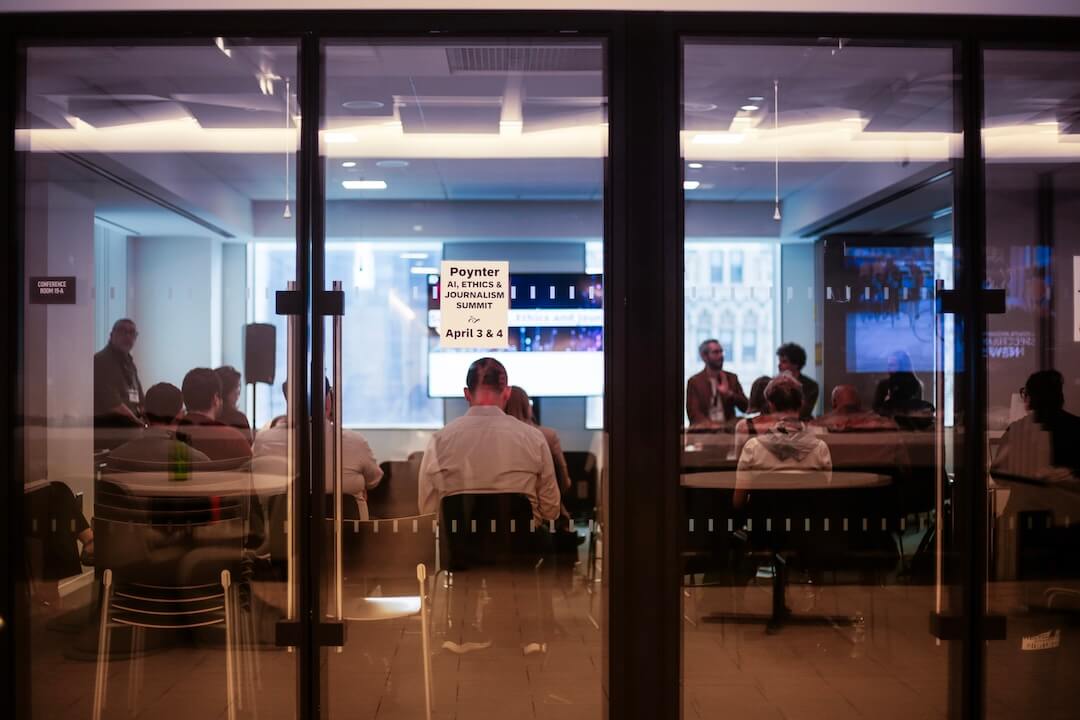Covering COVID-19 is Poynter’s new daily briefing about journalism and coronavirus. Sign up here to have it delivered to your inbox every morning, Monday through Friday.
It has to be a scary time for children. Their schools are closing, their parents are hoarding everything from toilet paper to Pop-Tarts and then they hear their parents are canceling their spring break trips?
The fact is that kids hear what adults are talking about and they worry more when they don’t clue them in.
The Child Mind Institute, an independent nonprofit for children and families struggling with mental health and learning disorders, offers some great advice for talking to children about the coronavirus that I have edited for brevity.
- Don’t be afraid to discuss the coronavirus. Look at the conversation as an opportunity to convey facts and set the emotional tone. “You take on the news and you’re the person who filters the news to your kid,” said Janine Domingues, a child psychologist at the Child Mind Institute. Your goal is to help your children feel informed and get fact-based information, which is likely more reassuring than whatever they’re hearing from their friends or on the news.
- Be developmentally appropriate. Don’t volunteer too much information, as this may be overwhelming. Instead, try to answer your child’s questions. Do your best to answer honestly and clearly. It’s OK if you can’t answer everything; being available to your child is what matters.
- Take your cues from your child. Invite your child to tell you anything they may have heard about the coronavirus, and how they feel. Give them ample opportunity to ask questions. Your goal is to avoid encouraging frightening fantasies.
- Deal with your own anxiety. “When you’re feeling most anxious or panicked, that isn’t the time to talk to your kids about what’s happening with the coronavirus,” warned Dr. Domingues.
- Be reassuring. Children are very egocentric, so hearing about the coronavirus on the news may be enough to make them seriously worry that they’ll catch it. It’s helpful to reassure your child about how rare the coronavirus actually is (the flu is much more common) and that kids actually seem to have milder symptoms.
- Focus on what you’re doing to stay safe. An important way to reassure kids is to emphasize the safety precautions that you are taking. Jamie Howard, a child psychologist at the Child Mind Institute, said “kids feel empowered when they know what to do to keep themselves safe.” If kids ask about face masks, explain that the experts at the Centers for Disease Control and Prevention say they aren’t necessary for most people. If kids see people wearing face masks, explain that those people are being extra cautious, maybe because they have a preexisting health problem.
- Stick to a routine. “We don’t like uncertainty, so staying rooted in routines and predictability is going to be helpful right now,” advised Domingues. This is particularly important if your child’s school or daycare shuts down. Structured days with regular mealtimes and bedtimes are an essential part of keeping kids happy and healthy.
Dr. H. Cody Meissner, chief of the division of pediatric infectious disease at Tufts University School of Medicine and a member of the American Academy of Pediatrics’ Committee on Infectious Diseases, said the first thing for parents to tell their kids is that it is really rare for children to get sick from this virus. And, he said, when they do get sick, it is fairly mild. But kids can be carriers.
One way to talk about the virus is to teach the kids, for the millionth time, to wash their hands. And, experts say, it is not a bad idea for grandma and grandpa to keep their distance for a while.
What about when the parents are fearful?
I was particularly impressed with the number of emergency hotlines that posted messages on social media in recent days saying that people who are anxious about the virus can give them a call.
Mental health experts say their phones are ringing with clients who are anxious about getting sick, or worse. The trouble with threats like viruses is that they trigger a “fight or flight” response. In a virus outbreak, there is not much you can do to fight it, and you can’t outrun it.
“The overwhelming message is that everyone is powerless in the face of an ominous and invisible threat that could arbitrarily strike anywhere or anyone,” Will Peischel wrote for Mother Jones. “That powerlessness morphs into a set of common symptoms: imaging worst outcomes or “catastrophizing,” helplessly fixating on the coronavirus, or, at the other extreme, blocking it out completely, which means ignoring even basic precautions like hand washing.
It’s really helpful for journalists to link to helplines and routinely post reminders like these to help steady the public when they get out of sorts about the uncertainty ahead.
When universities go virtual
I have been hearing from a lot of my college teacher friends around the U.S. that starting right away, or right after spring break, classes will be taught virtually, not in the classroom. That presents a lot of challenges and questions that are worth exploring.
I would ask schools how they can defend continuing large sporting events when they find sitting in class to be too much of a risk and when campuses are drafting plans to house students who must quarantine themselves.
What will happen with classes where there are labs — such as with chemistry, engineering and, by the way, journalism — where the students need to get their hands on instruments and software they don’t have at home?
One professor friend of mine in San Jose said a surprising number of students may not have access to the internet away from school. How will they be expected to attend virtual class?
There are lots of other complications, including how schools will ensure virtual learning is accessible to those with physical and learning disabilities, and how professors might offer “virtual office hours” as they would in person. Virtual learning also makes taking quizzes and exams more complicated because it is hard to enforce “closed book” rules or be sure the student is even the one taking the test. There are software programs, like HonorLock, that try to make online exams more secure.
One resource professors may not know about is Merlot, which collects tons, and I mean TONS, of free teaching resources and even entire courses that will help educators over the hump of moving their courses online quickly.
What about enrollment?
This is the height of the college acceptance season, the time of year when the letters come in the mail telling students they are “in.”
But COVID-19 may cause a lot of uncertainty for international students who may not be able to travel to the U.S., or depending on what is unfolding by the opening of the fall semester, may not want to. Nearly a million international students come to study in the U.S. each year.
In U.S. News and World Report, Marie Royce, assistant secretary of the Bureau of Educational and Cultural Affairs of the U.S. Department of State, said, “Though there are more than 4,000 colleges and universities in the U.S. — depending on how those institutions are counted — 70% of international students tend to study at only about 200 schools … Those students are primarily concentrated in Texas, California and New York.”
Canceled concerts
Billboard has a running list of canceled concerts worldwide.
The local newsroom perspective
My talented colleague Kristen Hare, who covers local news, checked in with four local newsrooms to find out how they are planning their COVID-19 coverage.
The Seattle Times told her they are thinking that this will be at least a yearlong story. That one rocked me a little, even though intellectually I guess I knew that. Saying it out loud makes it a bit more sobering. The spread will last for months, most likely, and if it does die down it will likely reemerge in the fall and winter, as viruses do.
Kristen also mentioned to me some observations from a Philadelphia Inquirer food writer, who said she noticed the images of empty grocery shelves seemed to be from Whole Foods and Trader Joe’s, and that the paper needed to go find out what was going on at stores like Aldi too.
Yes, it is true, we send all kinds of signals to audiences about how we are so different from our readers, listeners and viewers.
We’ll be back tomorrow morning with a new edition of Covering COVID-19. Sign up here to get it delivered right to your inbox.
Al Tompkins is senior faculty at Poynter. He can be reached at atompkins@poynter.org or on Twitter, @atompkins.








